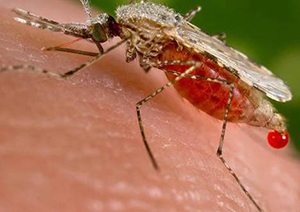Bangkok, Feb 2: A lineage of multidrug resistant malaria superbugs has widely spread and is now established in parts of Asia, according to a new study which warns that further spread of these parasites through India to Africa poses a risk of global public health disaster.
It is causing high treatment failure rates for the main falciparum malaria medicines, artemisinin combination therapies (ACTs), researchers said.
The emergence and spread of artemisinin drug resistant P falciparum lineage represents a serious threat to global malaria control and eradication efforts, they said.
Researchers warn that malaria parasites resistant to both artemisinin and its widely used partner drug piperaquine are now spreading quickly throughout Cambodia, with fitter multidrug resistant parasites spreading throughout western Cambodia, southern Laos and northeastern Thailand.
"We now see this very successful resistant parasite lineage emerging, outcompeting its peers, and spreading over a wide area," said Professor Arjen Dondorp, from Mahidol Oxford Tropical Medicine Research Unit (MORU) in Thailand.
"It has also picked up resistance to the partner drug piperaquine, causing high failure rates of the widely used artemisinin combination therapy DHA-piperaquine," said Dondorp.
"We hope this evidence will be used to reemphasise the urgency of malaria elimination in the Asia-region before falciparum malaria becomes close to untreatable.
Noting that the further spread of these multidrug resistant parasites through India to sub-Saharan Africa would be a global public health disaster, the researchers call for accelerated efforts in the Greater Mekong Sub-region and closer collaboration to monitor any further spread in neighbouring regions.
"We are losing a dangerous race to eliminate artemisinin resistant falciparum malaria before widespread resistance to the partner antimalarials makes that impossible," said Nicholas White, Professor at Oxford and Mahidol University.
"The consequences of resistance spreading further into India and Africa could be grave if drug resistance is not tackled from a global public health emergency perspective," White said.
After examining blood spot samples from patients with uncomplicated falciparum malaria from sites in Cambodia, Laos, Thailand and Myanmar, the team found that PfKelch13 C580Y, a single mutant parasite lineage, has spread across three countries, replacing parasites containing other, less ACT-resistant mutations.
Although the C580Y mutation does not confer a higher level of artemisinin resistance than many other PfKelch13 mutations it appears to be fitter, more transmissible and spreading more widely.
"The spread and emergence of drug resistant malaria parasites across Asia into Africa has occurred before. Last time it killed millions," White added.
The study was published in The Lancet Infectious Diseases journal.





Comments
Add new comment